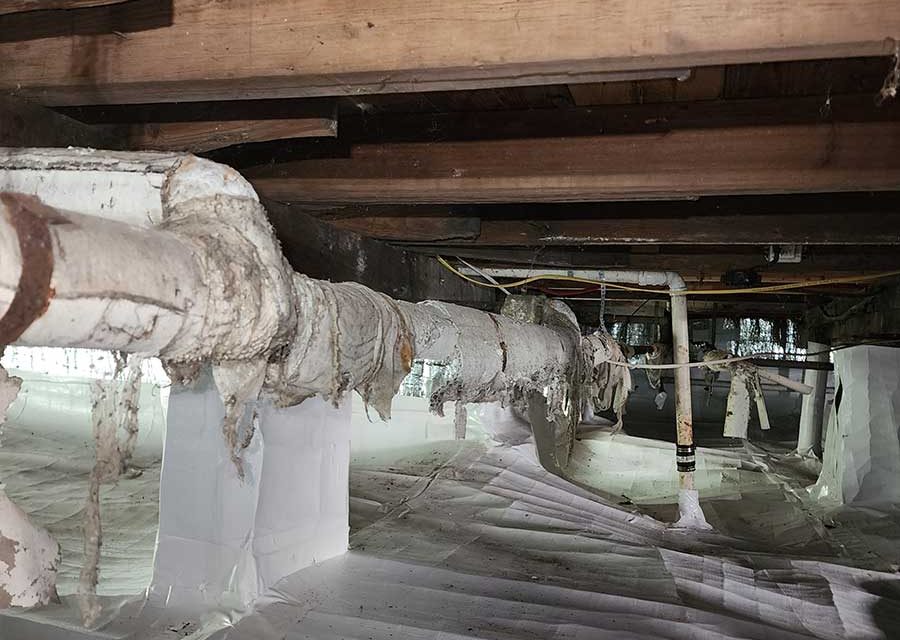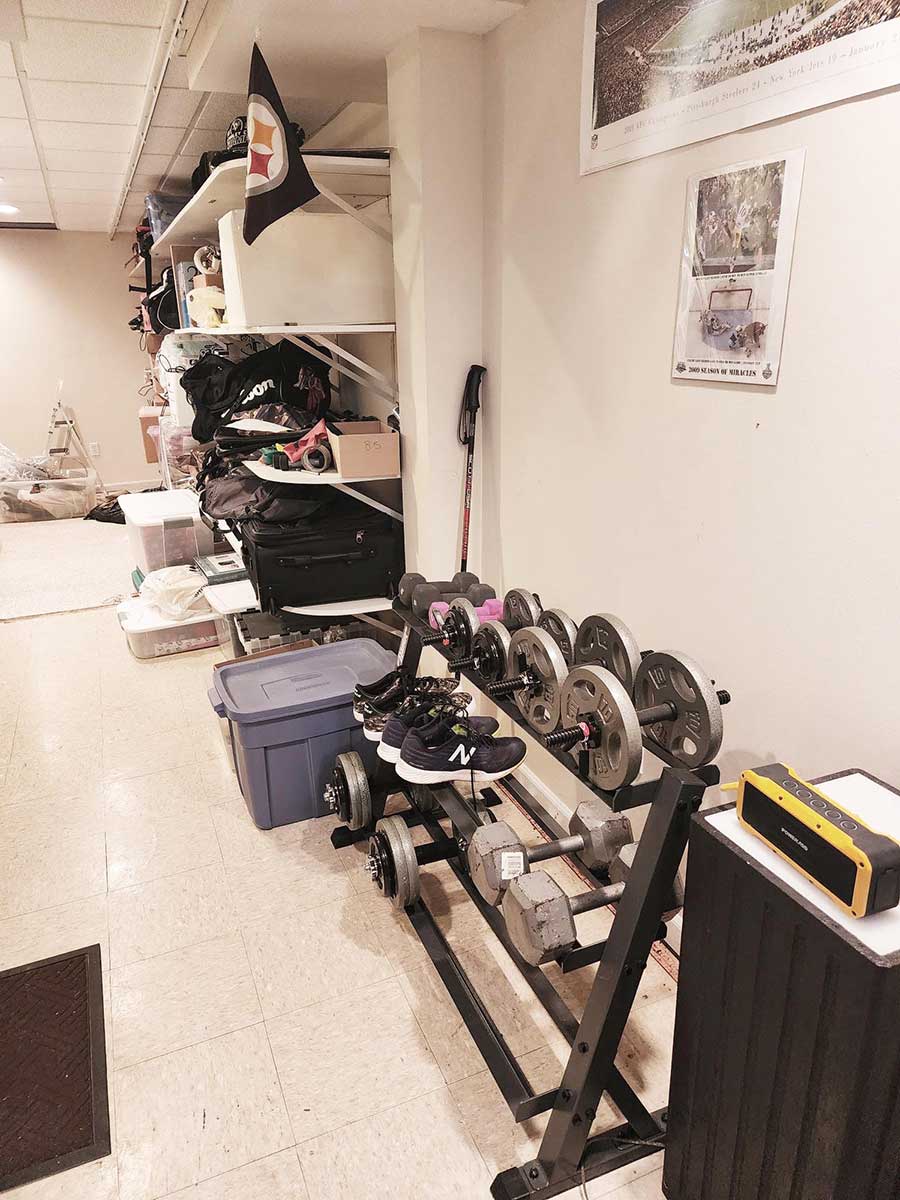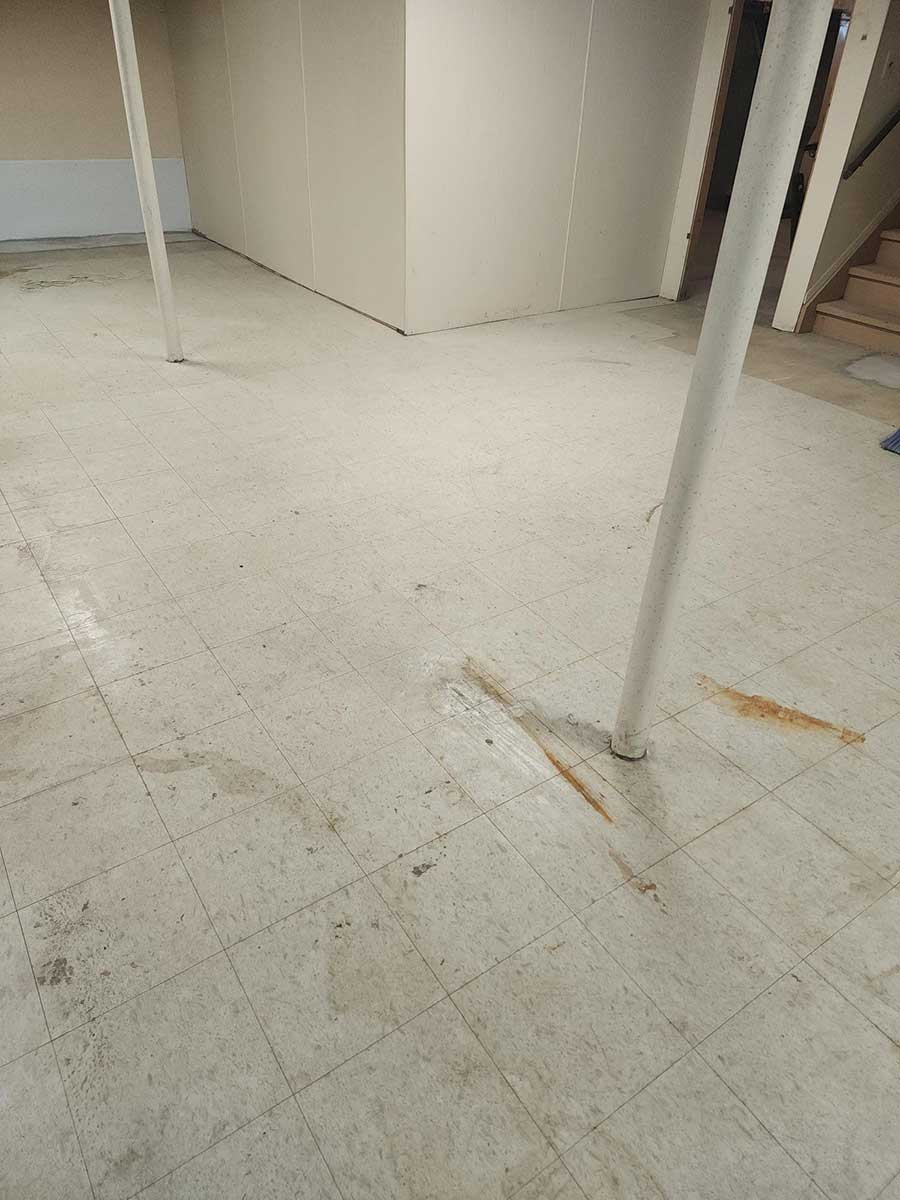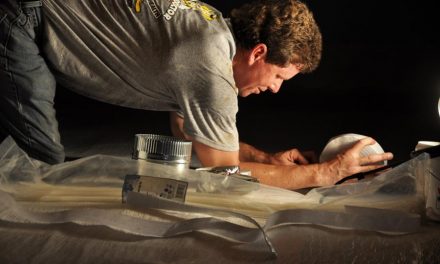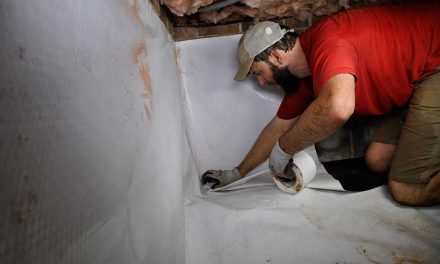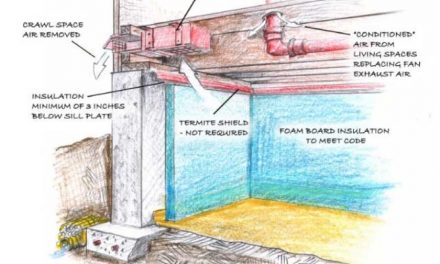By Gregory Fahrenbruch
Photos courtesy of Gregory Fahrenbruch
OSHA has requirements for what is considered “a competent person.” In this context, according to OSHA, a competent person means “one who is capable of identifying existing asbestos hazards in the workplace and selecting the appropriate control strategy for asbestos exposure” and “who has the authority to take prompt corrective measures to eliminate them.” A competent person, as defined, handles all aspects of the job when onsite. A competent person is trained to identify and respond to all safety issues and project design issues. A competent person can make some financial decisions to take corrective action on a project and know when to stop a project because safety issues are getting out of bounds. A competent person knows Potential Asbestos Containing Materials (PACM) must always be tested to prove it is not Asbestos Containing Materials (ACM) before they start working. If the material is not tested then it must be treated as ACM.
A Competent Person On a Jobsite
An example of a competent person acting competently would be a crew supervisor on a basement waterproofing crew (who is not asbestos trained or medically monitored) walking into a project in a basement knowing his crew is going to jackhammer the concrete from the perimeter of the basement and seeing 12×12 tiles on the floor. His first question to a homeowner or his office staff is, “Where is the asbestos testing done on this tile”?
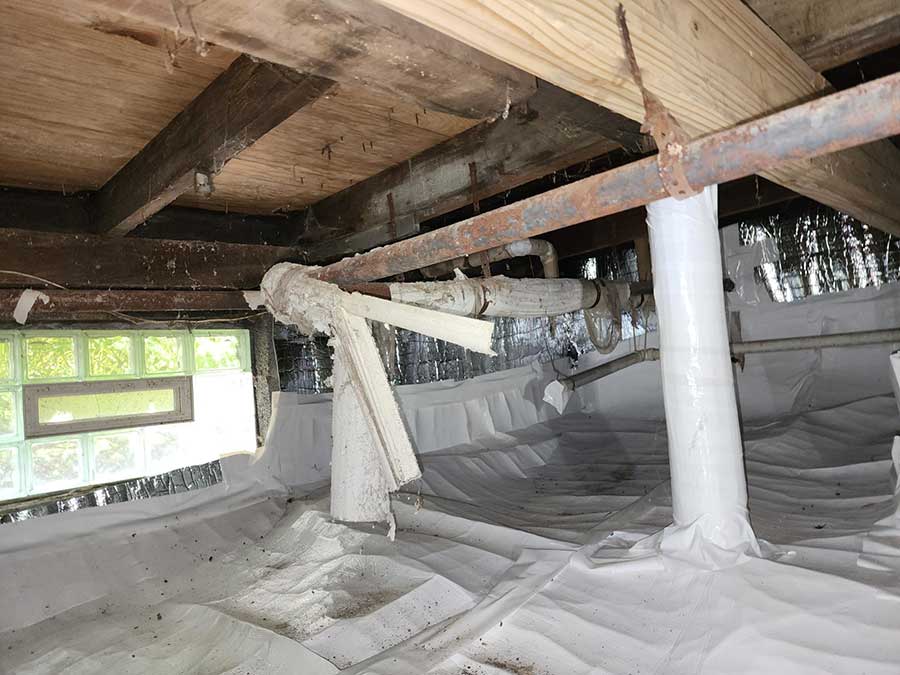
The basement crawlspace photos on this page, the previous page, and the next page all show that an encapsulation crew installed the waterproofing barrier despite the highly damaged asbestos-containing insulation on the home’s boiler pipes.
If no testing results were provided, he would proceed to tell the homeowner that the tile needs testing before the work starts and it needs to be done by an accredited inspector and it needs to go to a certified laboratory.
If testing was provided and sample results were negative for asbestos, the competent person would evaluate the forms on hand for inspector accreditation and laboratory accreditation. If all checked out that the samples were taken by an accredited inspector and the analysis was done through an accredited laboratory (NVLAP or ACGIH) they would then proceed with the crew to conduct work.
In this case, who didn’t act competently?
The person who scheduled the project didn’t ensure the proper documentation was on hand before the project was scheduled.
Asbestos Danger In a Crawlspace
A few months back, I was called out to a project by a waterproofing company. The new homeowners purchased a home with an encapsulated crawlspace. There was some question the new homeowners had about the crawlspace regarding its condition. Not knowing who did the work, they got on the phone and reached out to any company that may know something about the project at hand. When the field inspector opened the window, he saw a fully encapsulated crawlspace with damaged asbestos pipe wrap.
He would not enter the crawl space because he understood the potential for a dangerous situation. He explained to the homeowner that they needed to have the asbestos removed before he could conduct his inspection. When I arrived at the home to do my inspection, the pictures illustrate what I found.
In this case, the crawl space encapsulation should have never been done before steps were taken to mitigate the asbestos danger. The pipe wrap in this case should have been removed and at the very least the pipe wrap should have been encapsulated and labeled. Everyone involved in the encapsulation project did not act competently.
Let’s dive down into the definition of competent person in terms of construction regulations It reads as such:
1910.36 (f) (Taken from Safety and Health Regulations for Construction; General Safety and Health Provisions
“Competent person means one who is capable of identifying existing and predictable hazards in the surroundings or working conditions which are unsanitary, hazardous, or dangerous to employees, and who has authorization to take prompt corrective measures to eliminate them.”
1926.1101(b) (Taken from: Federal OSHA Asbestos Regulation; Safety and Health Regulations for Construction; Toxic and Hazardous Substances)
“Competent person means, in addition to the definition in 29 CFR 1926.32 (f), one who is capable of identifying existing asbestos hazards in the workplace and selecting the appropriate control strategy for asbestos exposure, who has the authority to take prompt corrective measures to eliminate them, as specified in 29 CFR 1926.32(f): in addition, for Class I and Class II work who is specially trained in a training course which meets the criteria of EPA’s Model Accreditation Plan (40 CFR part 763) for supervisor, or its equivalent and, for Class III and Class IV work, who is trained in a manner consistent with EPA requirements for training of local education agency maintenance and custodial staff as set forth at 40 CFR 763.92 (a)(2).”
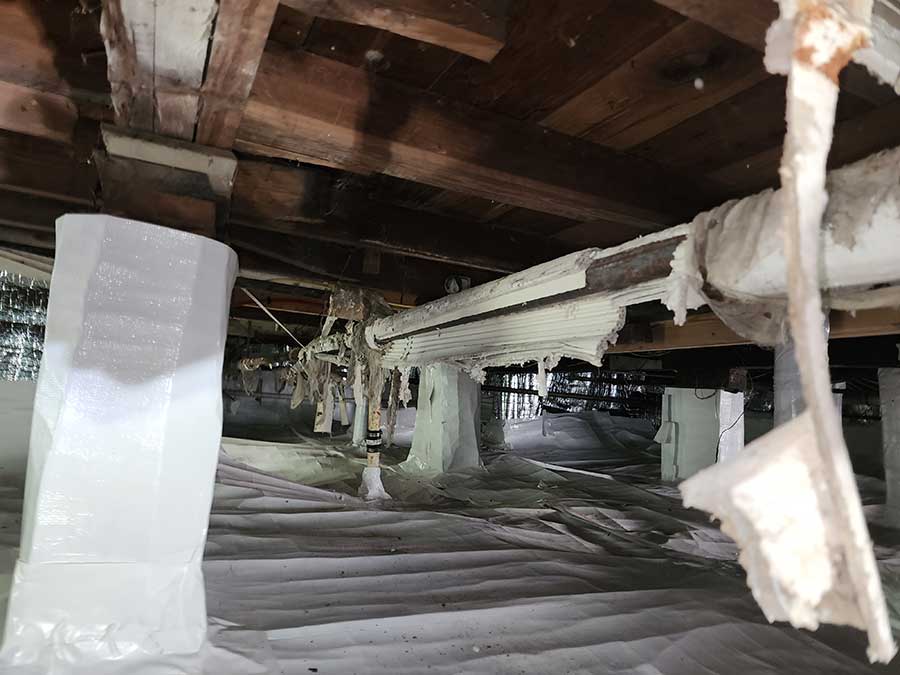
This type of OSHA violation related to potential asbestos danger is a common scenario. The crew that worked on this encapsulation project is at risk because the pipe wrap is so highly damaged that the asbestos could be airborne.
Untrained “Experts”
Oftentimes, I see salespeople (commissioned-based) who are trying to act as a competent person when they see an asbestos problem possibly getting in the way of their sale. They become the “helpful” fountain of knowledge regarding asbestos when they never received any training on the subject other than some basic awareness training (if any). They commonly use their position as a waterproofing expert to persuade the homeowner into believing they have no asbestos risk. They tell homeowners that a 12×12 tile is not asbestos-containing or the pipe wrap in the crawl is in good condition and no action is required. I’ve even been told by homeowners that their salesperson told them they could remove asbestos tiles themselves without any risk! I always wondered how the homeowners who remove asbestos address air sampling, post-removal steps, and disposal. Asbestos-containing materials always pose a danger to people working with them. The two pictures below were taken in separate basements about 20 miles apart.
In these cases, there are factors that a competent person must take into account. They are:
Figure 4: Was the basement finished at the same time as the house was finished? Or was the basement finished later? Even if the basement was finished after 1981, asbestos materials in stock could still be installed.
Figure 5: The home was built right at the cutoff date of 1981. With that being said, the tile still needs to be tested for asbestos, because of the reasons given in Figure 4.
It’s safe to say that everyone in the basement waterproofing industry needs to have the mandated 2-hour annual asbestos awareness training from a competent person who meets the definition of 1926.1101(b). Having awareness training does not make you a competent person. Anyone who calls a judgment (other than for a construction material being positive for asbestos) on a potential asbestos material without having it tested stepped outside of their knowledge base or into a regulated field.
Evaluating a Job
When evaluating a potential job, the term disturbance brings up a very interesting concept. Its definition is this according to 1926.1101(b):
“Disturbance means activities that disrupt the matrix of ACM or PACM, crumble or pulverize ACM or PACM, or generate visible debris from ACM or PACM. In no event shall the amount of ACM or PACM so disturbed exceed that which can be contained in one glove bag or waste bag which shall not exceed 60 inches in length and width.”
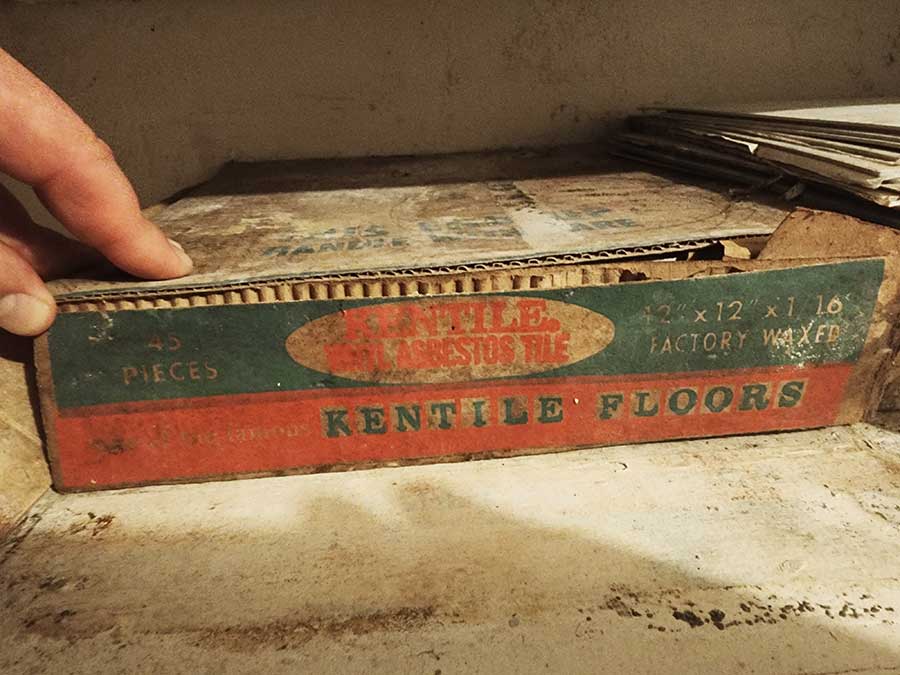
This box of asbestos-containing tile was found in the basement of the home built in 1965. It is the same tile shown in Figure 4.
This definition can be used to describe jackhammering through asbestos containing materials or potential asbestos containing materials. It also could be applied to a crew working in a basement with wrapped pipes over their heads while they run jackhammers vibrating wrapped pipes, or in a crawlspace where the employees can come into contact by bumping asbestos-wrapped pipes with their bodies, tools, or materials.
The sales staff and crew chiefs need to be trained on this definition for evaluating project risk. This basic training goes somewhat beyond the annual awareness training. It’s a required training subject matter that matches up with competent person training to further recognize the obvious dangers related to asbestos exposure.
Having competent people acting competently within their roles reduces liabilities associated with homeowner complaints and long-term worker compensation legacy costs for asbestos exposures. Ensuring testing is done on PACM before work starts is an OSHA law, unless you are going to presume the materials to be disturbed contain asbestos. Telling homeowners to remove their own ACM or PACM is bad news and it will eventually break trust between the company and their clients.
Greg Fahrenbruch
Greg Fahrenbruch founded Restoration Environmental Safety Technologies, or REST, in Ortonville, Michigan, in 2010. He is an industrial hygienist with a degree from Ferris State University with expertise in asbestos removal. He holds state accreditations as an asbestos inspector, asbestos contractor supervisor, management planner, and asbestos-licensed contractor. He also has a background in insurance restoration. Contact him at greg@restenvironmental.com.
Summer 2024 Back Issue
$4.95 – $5.95
Properly Encapsulating a Crawlspace
The Competent Person
Pushing the Envelope: Steeply Sloped Green Roofs
Transforming Foundations with Fluid-Applied Membranes for Superior Protection
Description
Description
Properly Encapsulating a Crawlspace
By Vanessa Salvia
For many homeowners, the crawlspace is an out-of-sight, out-of-mind area. However, leaving this space unchecked can lead to moisture problems, poor indoor air quality, and wasted energy.
The Competent Person
By Gregory Fahrenbruch
When dealing with asbestos, OSHA has requirements for what is considered “a competent person.” Having awareness training is good, but be aware of whether the person giving you advice is actually “competent.”
Pushing the Envelope: Steeply Sloped Green Roofs
By Richard Hayden, GRP, ASLA Emeritus
Architects continue to push the boundaries of design and construction, and the roof is no exception. The roof was once the repository of HVAC equipment and other building utility equipment. No more.
Transforming Foundations with Fluid-Applied Membranes for Superior Protection
By Emily Newton
Managing moisture is one of the most persistent challenges in building foundations and basements. While many professionals opt for simple dampproofing in this sphere, it’s becoming increasingly common to go further. Opting for fluid-applied waterproofing instead can bring considerable value to a project.
Additional Info
Additional information
| Weight | N/A |
|---|---|
| Magazine Format | Digital Download Magazine, Print Mailed Magazine |

